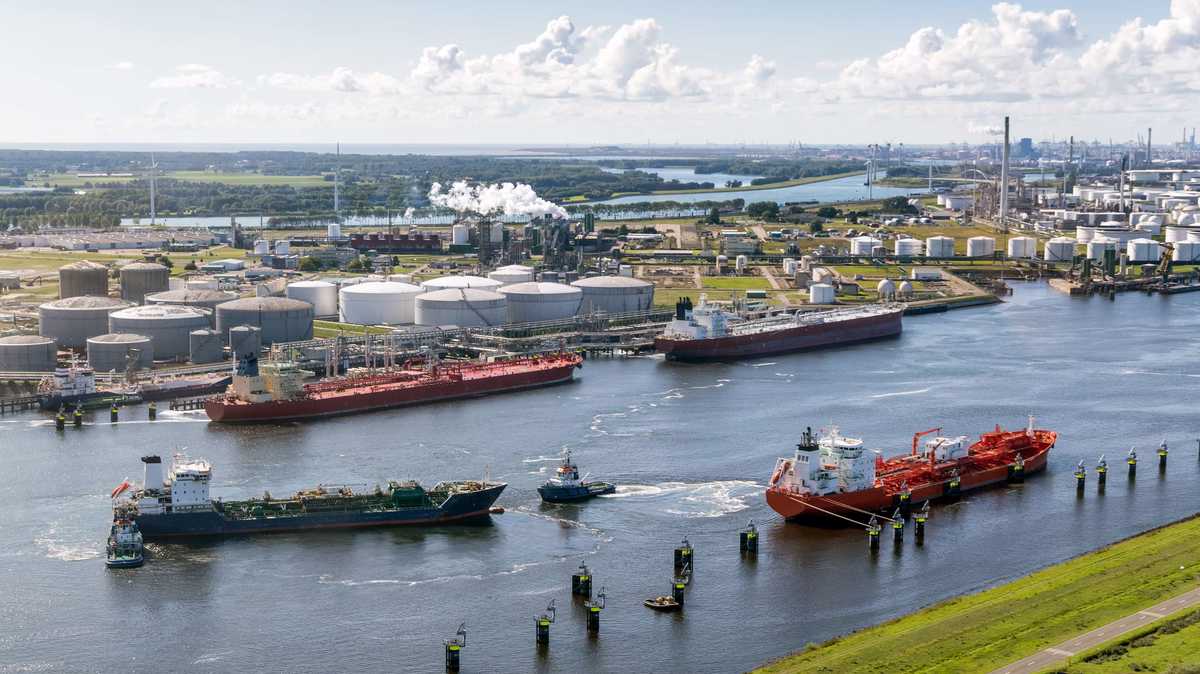ClassNK explains penalties for non-compliance with FuelEU Maritime
Ships that fail to comply with FuelEU Maritime for two or more consecutive years can be barred from entering any port of an EU member state, ClassNK warns.
 PHOTO: Aerial view of the Port of Rotterdam in the Netherlands. Getty Images
PHOTO: Aerial view of the Port of Rotterdam in the Netherlands. Getty Images
FuelEU Maritime, the EU’s first regulation aimed at decarbonising the maritime sector, will become law this autumn and implemented from January 2025.
Japanese classification society ClassNK has compiled a list of frequently asked questions to help shipowners and operators understand the scope and application of the regulation. It has also clarified what the consequences of non-compliance will be.
The responsible shipping companies will have to pay a penalty if the greenhouse gas (GHG) intensity of the fuel used onboard a vessel exceeded the EU's GHG intensity limit for that year. For dual-fuel vessels, the penalty will be calculated based on the weighted average GHG intensity of the fuels used onboard.
 PHOTO: Formula for calculating non-compliance penalties. ClassNK
PHOTO: Formula for calculating non-compliance penalties. ClassNK
The EU's GHG intensity reduction targets are as follows:
- 2% 2025
- 6% 2030
- 14.5% 2035
- 31% 2040
- 62% 2045
- 80% 2050
If a vessel fails to comply for two or more years in a row, the penalty is multiplied by 1-(n-1)/10 “where n is the number of years to which the penalty applies,” according to ClassNK.
The class society urges EU member states to refuse entry to non-compliant ships that are subject to expulsion orders until they fulfill their obligations.
“Revenues from the penalty of the FuelEU Maritime will be used to support the introduction and promote the use of renewable and low-carbon fuels in the maritime sector,” ClassNK explained. It will include constructing bunkering infrastructure at ports, building shore power facilities and developing technologies to support cleaner marine fuel adoption.
ClassNK also pointed out that the EU will consider aligning FuelEU Maritime with mid-term measures up for discussion at the global IMO level. These include economic measures like carbon pricing and technical measures like phased reductions of well-to-wake GHG emissions.
This is “to avoid duplication of regulations on GHG emissions from maritime transport at EU and international levels,” it concluded.
By Konica Bhatt
Please get in touch with comments or additional info to news@engine.online






